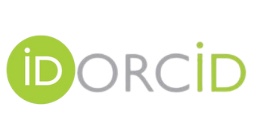Epidemiología del glaucoma
Keywords:
glaucoma, atención primariaAbstract
Se realizó un estudio clínico-epidemiológico, prospectivo y longitudinal en enfermos de glaucoma que acudieron a las reconsultas de Oftalmología del Policlínico Docente “Dr.Tomás Romay” y el Policlínico Comunitario de Las Cañas del municipio de Artemisa, Provincia La Habana, en los tres primeros meses del año 2004. Se analizan los hábitos higiénico-dietéticos, herencia y factores de riesgo, entre otros. Se detectó una prevalencia de l2,2%, siendo los factores de riesgo más predominantes los trastornos psicológicos (48,9%) y la hipertensión arterial con (42,4%). La herencia no fue determinante. El defecto refractivo más representado fue el astigmatismo con 76,1%. Dentro del tratamiento higiénico-dietético, el 80,5% refirieron dieta equilibrada, un 57,6% ingieren exceso de líquidos, el 17,3% refirieron realizar ejercicios físicos y ninguno practicaba ejercicios oculares. Se considera que debe enfatizarse el mejoramiento de los hábitos higiénicodietéticos con vistas a evitar las descompensaciones tan frecuentes de esta enfermedad.
Downloads
References
Glaucoma [Sitio internet]. Disponible en: www.clinano.com.ar [Acceso 14-3-2004]
Glaucoma [Sitio Internet]. Disponible en: www.discapnet.es . [Acceso: l4-3-2004].
Kanski Clinical Oftalmology.1998(8): 186-225.
Murdoch IE, Cousens SW, Babalova OE, Yang YF, Abiose A, Jones BR. Glaucoma
prevalence may not be uniformaly high in all “black”populations. Af J Med Med Sci2001; 30
(4):337-9.
Ortiz GE, Miqueli RM, González GA, Lantigua CA. Avances en la genética de los
glaucomas. Rev Cubana Oftalmol l999; 12(2):77 -83.
Labrada RY. Genética del glaucoma primario de ángulo abierto. Rev Cubana Oftalmol
;15(1)
Ibáñez MM, Rodríguez RA, Ferrer ML, Fernández SG. Estudio comparativo de 2 métodos
terapéuticos en el glaucoma crónico simple. Rev Cubana Oftalmol 1996;9(2):110-5
Genética clásica y molecular. [Sitio Internet] Disponible en: www.monografías.com [Acceso
-3-2004].
Barría BF. Análisis epidemiológico de la ceguera. Arch Chil Oft 1995; 52(1):55-70.
Sakata K, Scapricen L, Sakata LM, Carvalho A, Alvarea C, Selanke I, et al. Projeto
glaucoma: resultados parciais 2000 na região de Piraguara- PR. Arq Bras. Oftalmol 2002;
(3):333-7.
Jonasson F, Damji, KF, Arnarsson A, Swerrisson T, Wang L, Sasaki H, et al. Prevalence of
open-angle glaucoma in Iceland: Roykjavik eye study. Eye 2003; 17(6):747-53.
Ramakrishnan R, Nirmalan PK, Krishmadas R, Thulasiraj RD, Tielsch JM, Katz J, et al.
Glaucoma in a rural p opulation of Southern India : the Aravind comprehensive eye survey.
Opthalmology 2003;110(8):1484-90.
Bourne RR, Sukudom P, Foster PJ, Tantisevi V, Jitapunkulslee PS, Jhonson GJ, et al.
Prevalence of glaucoma in Thailand : a population based survey in Rom-Klae-District,
Bangkok . Br J Ophthalmol 2003; 87(9):1069-74.
Povoa CA, Nicolela MT, Valle AS, Gómez LE de S, Neisstein I. Prevalência de glaucoma
identificada en campanha de deteccão en São Paulo. Arq Bras Oftalmol 2001; 64(4):303-7.
Barría VF. Epidemiología del glaucoma. Arch Chil Oftalm 1997; 54(2):11-4.
Barría VF. Epidemiología. [Sitio Internet} Disponible en: www.google.com [Acceso 14-3-2004].
Glaucoma congénito [Sitio Internet} Disponible en: www.discapnet.es [Acceso 14-3-2004]
Ritch R, Chang BM, Liebmann JM. Angle closure in younger patients. Ophthalmology 2003; 38110(10):1880-9.
Rabiak PK. Frequency and predictors of glaucoma after pediatric cataract surgery: Am J. Ophthalmol 2004; 137(l):30-7.
Sloan FA, Brown DS, Carlisle GS; Ostermann J, Lee PP. Estimates of incidence with longitudinal claims data. Arch Ophthalmol 2003; 121(10):1462-8.
Le A, Mukesh BN, Mc Carthy CA, Taylor AR. Risk factors associated with the incidence of open-angle glaucoma: the visual impairment project. Invest-Ophthalmol Vis Sci 2003; 44 (4):3783-9.
Lee PP, Feldman ZW, Ostermann J, Brown DS, Sloan FA. Longitudinal prevalence of major eye diseases. Arch Ophthalmol 2003; 121(9):1303-10.
Paria C. Cuida tus ojos: métodos naturales para ver bien sin gafas.5 ed. Madrid : Edit. Integ; 2003.
Published
How to Cite
Issue
Section
License
Medimay protects copyright from the very first moment the submission is made, but upon publication it assumes a Creative Commons 4.0 (cc-by-nc) license, which allows the use of the work to share (copy and redistribute the material in any medium or format) and adapt (remix, transform and build from the material) as long as exclusive mention is made of the publication in the journal as a primary source, prohibiting its commercialization. The author always retains his/her right.














 This site is licensed under a
This site is licensed under a